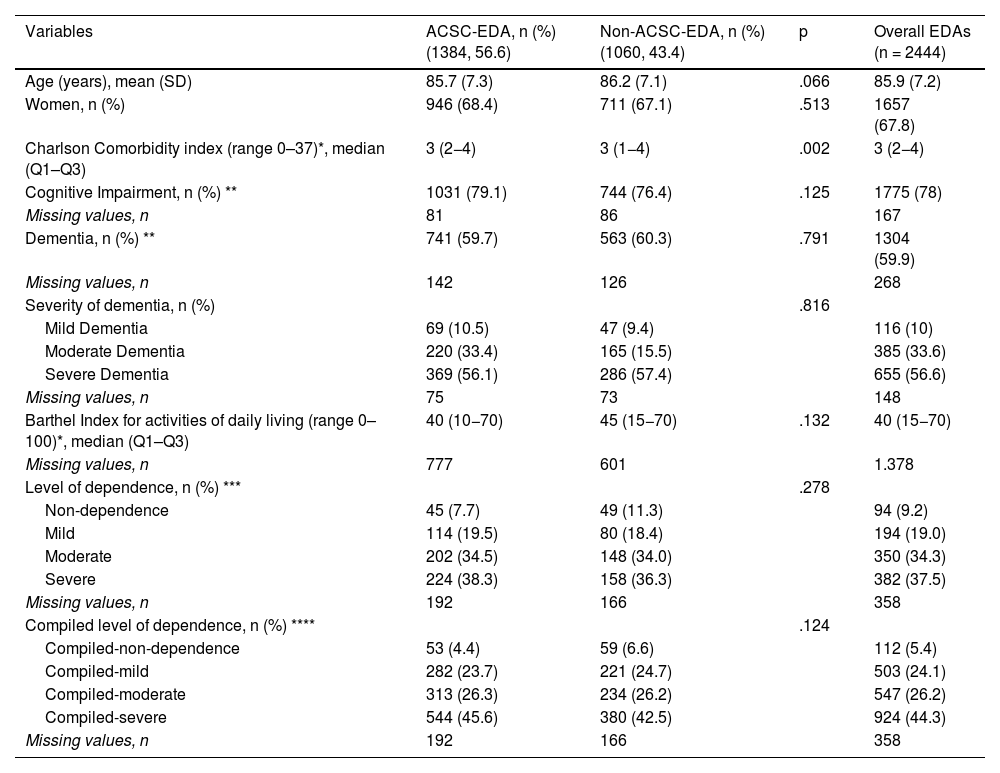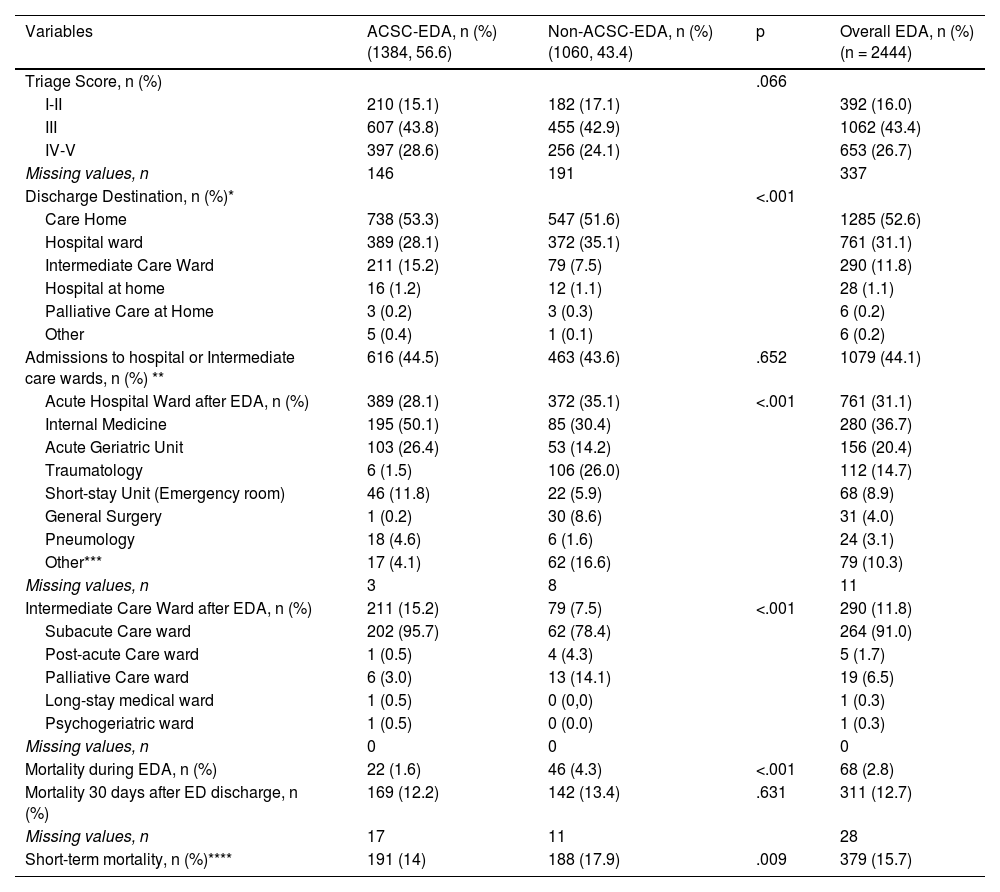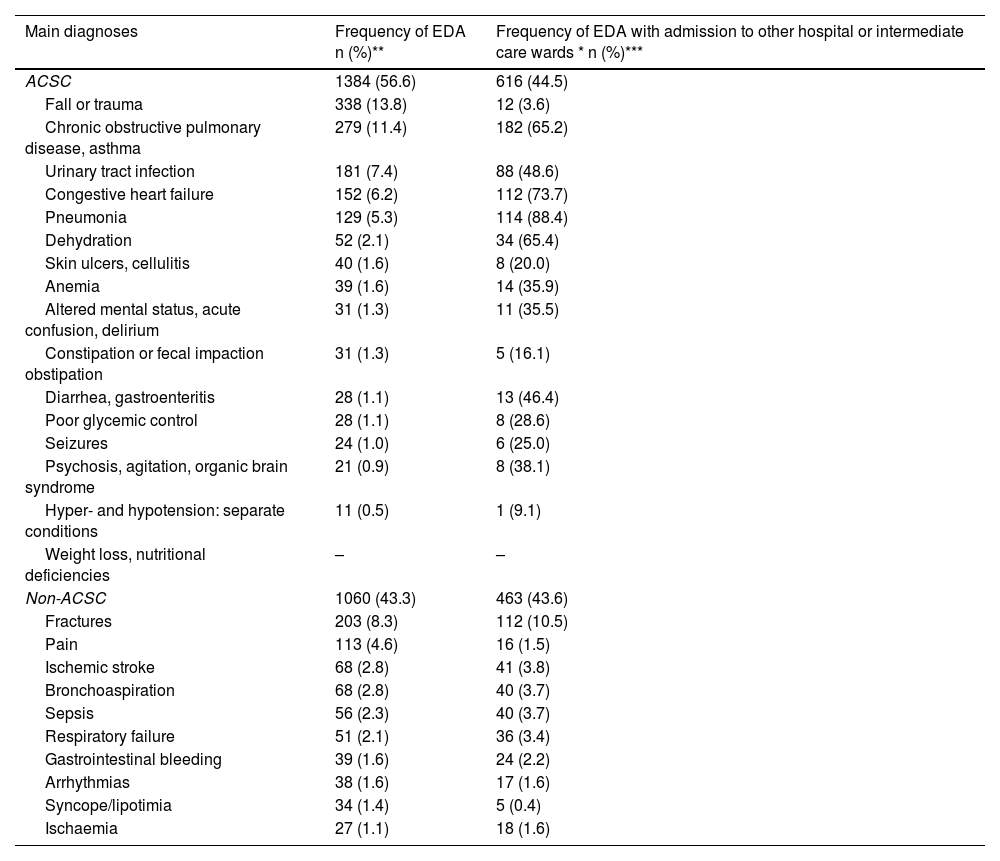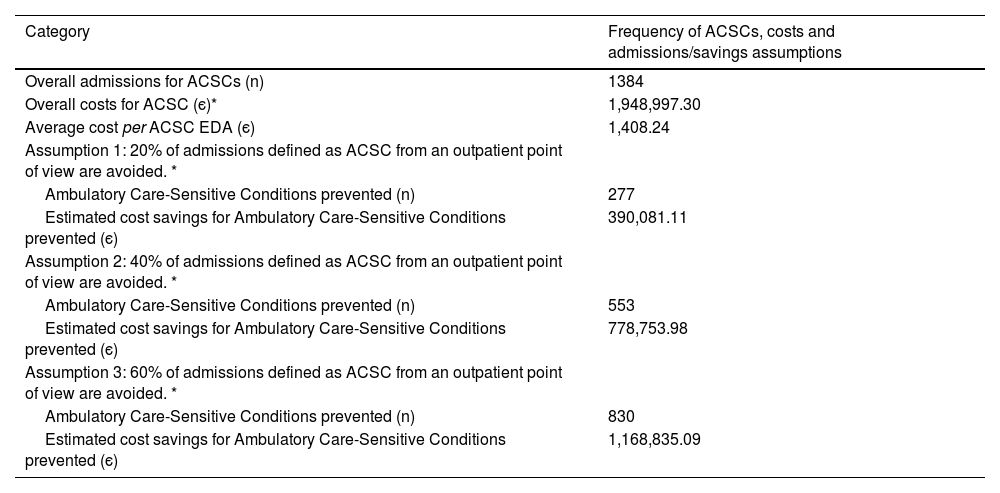To assess the frequency of emergency department admissions (EDA) for ambulatory care sensitive conditions (ACSC) and non-ACSC among older adults living in care homes (CH), to describe and compare their demographic and clinical characteristics, the outcomes of the hospitalisation process and the associated costs.
MethodThis multicenter, retrospective and observational study evaluated 2444 EDAs of older adults ≥ 65 years old living in care homes in 5 emergency departments in Catalonia (Spain) by ACSC and non-ACSC, in 2017. Sociodemographic variables, prior functional and cognitive status, and information on diagnosis and hospitalisation were collected. Additionally, the costs related with the EDAs were calculated, as well as a sensitivity analysis using different assumptions of decreased admissions due to ACSC.
ResultsA total of 2444 ED admissions were analysed. The patients’ mean (SD) age was 85.9 (7.2) years. The frequency of ACSC-EDA and non-ACSC-EDA was 56.6% and 43.4%, respectively. Severe dependency and cognitive impairment were present in 56.6% and 78%, respectively, with no differences between the two groups. The three most frequent ACSC were falls/trauma (13.8%), chronic obstructive pulmonary disease/asthma (11.4%) and urinary tract infection (7.4%). The average cost per ACSC-EDA was є1,408.24. Assuming a 60% reduction of ACSC-EDA, the estimated cost savings would be є1.2 million.
ConclusionsEmergency admissions for ACSC from care homes have a significant impact on both frequency and costs. Reducing these conditions through targeted interventions could redirect the avoided costs towards improving care support in residential settings.
Evaluar la frecuencia de admisiones en servicios de urgencias (ASU) por ambulatory care sensitive conditions (ACSC) y no-ACSC de personas que viven en residencias; describir y comparar sus características, y analizar los costes asociados.
MétodoEste estudio multicéntrico, retrospectivo y observacional evaluó 2.444 ASU de personas ≥ 65 años que viven en residencias en 5 servicios de urgencias de Cataluña por ACSC y no-ACSC, en 2017. Se recogieron variables sociodemográficas, estado funcional y cognitivo, e información sobre diagnóstico y hospitalización. Se evaluaron los costes relacionados con ACSC-ASU y se efectuó un análisis de sensibilidad utilizando diferentes supuestos de disminución de ingresos por ACSC.
ResultadosLa media de edad de la muestra del estudio fue de 85,9 (desviación estándar 7,2 años). La frecuencia de ACSC-ASU y no-ACSC-ASU fue del 56,6% y el 43,4%, respectivamente. El 56,6% y el 78% presentaban dependencia severa y deterioro cognitivo, respectivamente, sin observarse diferencias entre los dos grupos. Las tres ACSC más frecuentes fueron caídas/traumatismos (13,8%), enfermedad pulmonar obstructiva crónica/asma (11,4%) e infección urinaria (7,4%). El coste medio por ACSC-ASU fue de 1.408,24 є. Suponiendo una reducción del 60% de las ACSC-ASU, el ahorro de costes estimado sería de 1,2 millones de euros.
ConclusionesLas admisiones en urgencias por ACSC procedentes de entornos residenciales suponen un impacto significativo tanto en la frecuencia como en los costes. La disminución de estas patologías mediante la aplicación de intervenciones específicas podría redirigir los costes evitados hacia la mejora del apoyo asistencial en los entornos residenciales.
Article
Diríjase desde aquí a la web de la >>>FESEMI<<< e inicie sesión mediante el formulario que se encuentra en la barra superior, pulsando sobre el candado.

Una vez autentificado, en la misma web de FESEMI, en el menú superior, elija la opción deseada.

>>>FESEMI<<<










